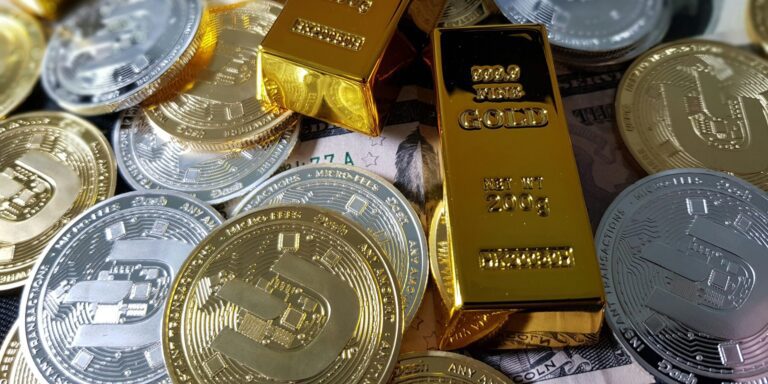Gold prices surged to near-record highs, nearing the $4,000 per ounce mark, as global economic uncertainties prompted investors to flock to the precious metal. The sharp increase in gold prices signals a significant shift in investor sentiment, with many seeking safe-haven assets amid rising geopolitical tensions, inflationary pressures, and ongoing economic instability. This rise reflects the broader trend of increasing demand for gold, as it is seen as a reliable store of value during times of market turbulence and financial uncertainty.
Gold has long been viewed as a safe haven during periods of economic distress. When financial markets experience instability, or when geopolitical events create widespread uncertainty, investors typically move their money into assets that are less likely to lose value. This instinct to safeguard wealth is driving up gold prices, as the metal remains one of the most reliable ways to protect investments from market volatility. Over the past few months, multiple factors have contributed to a sense of unease in the global economy. Geopolitical tensions in various regions, such as trade wars, military conflicts, and instability in key economic zones, have led to increased concerns over the future of global markets.
In addition to geopolitical risks, inflation has also emerged as a significant issue for many economies worldwide. As central banks struggle to manage rising consumer prices, the purchasing power of currencies has decreased, making traditional investment vehicles like stocks and bonds less attractive. This shift toward inflation protection has made gold an appealing choice for investors. Unlike paper currencies, which can be devalued through government policy or economic mismanagement, gold holds intrinsic value that tends to remain stable over time. For investors concerned about the erosion of their wealth, gold provides a hedge against inflation and serves as a long-term store of value.
The growing uncertainty surrounding global supply chains, fluctuating currencies, and volatile interest rates has further contributed to the rise in gold prices. With traditional assets becoming more unpredictable, investors are increasingly drawn to gold as a stable alternative. Its history as a reliable asset during times of economic upheaval makes it especially attractive when financial markets are facing significant challenges. Whether it’s through a stock market decline, political unrest, or the looming fear of an economic slowdown, gold offers a safe haven that investors trust.
Analysts are predicting that the demand for gold is likely to remain strong, especially if the global economic outlook continues to be clouded with uncertainty. As central banks continue to grapple with the challenges of managing economic growth while addressing inflation and currency instability, gold is expected to serve as a hedge against these risks. If the economic situation does not stabilize soon, gold’s role as a protective asset will likely become even more prominent. Furthermore, as global markets become more unpredictable, the demand for assets like gold that are not directly tied to the performance of stock markets or currencies will continue to rise.
The increased interest in gold also reflects broader investor concerns about long-term financial security. With many individuals seeking more stable options for their investments, gold presents an opportunity to secure wealth in a way that is not influenced by market fluctuations or the policies of individual governments. This desire for financial protection is leading to an ongoing surge in demand, pushing gold prices toward new highs.
As gold prices approach the $4,000 per ounce mark, it is a clear indication that investors are actively seeking stability in an increasingly unpredictable world. With its inherent value and proven ability to preserve wealth during times of crisis, gold continues to be an asset that investors can rely on when other markets seem too risky. Moving forward, experts suggest that the demand for gold may continue to grow, especially as the global economic environment remains uncertain and market volatility shows no signs of abating. As a result, gold’s role as a vital hedge against economic instability will likely remain central to many investors’ portfolios in the years ahead.


